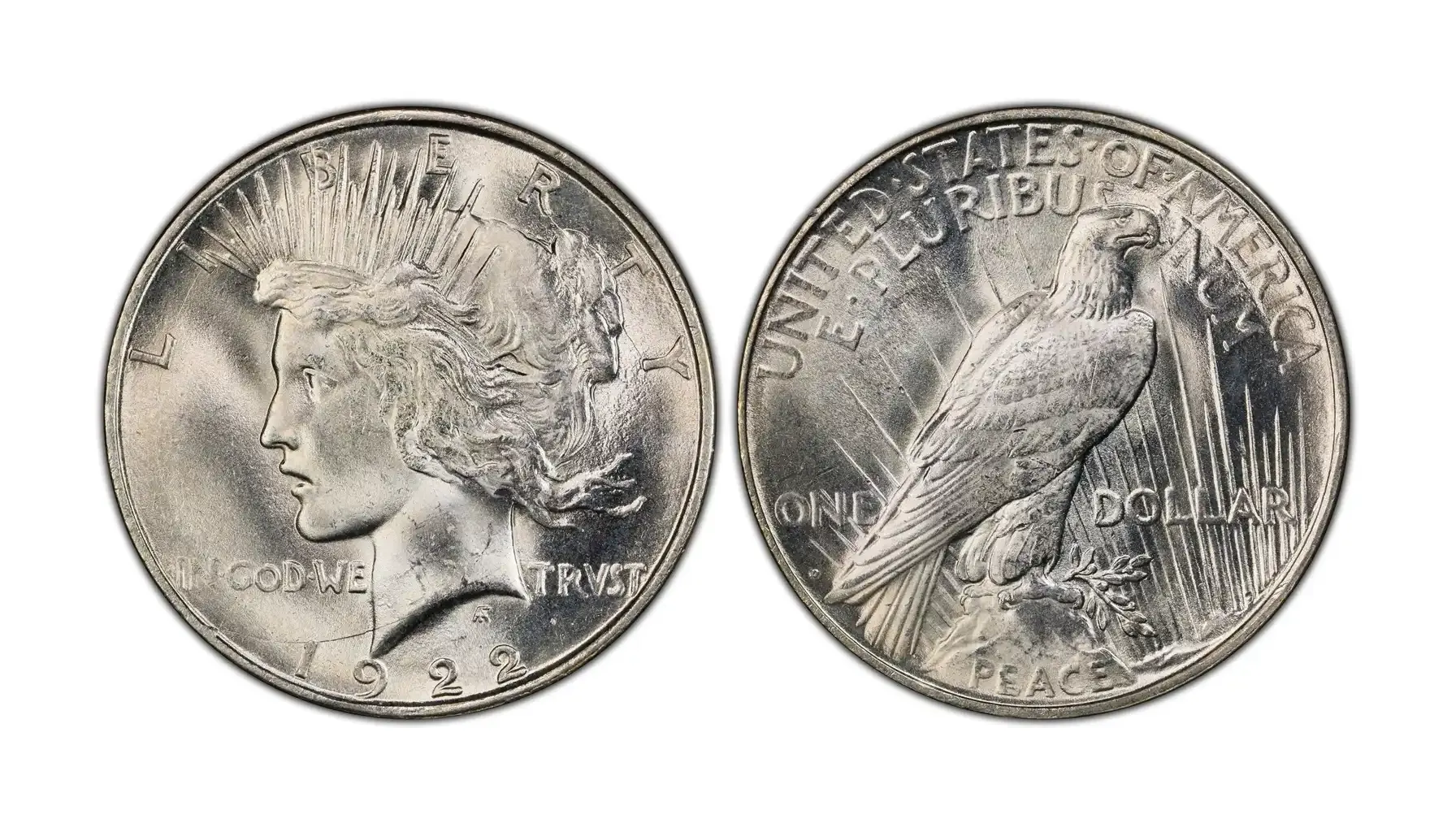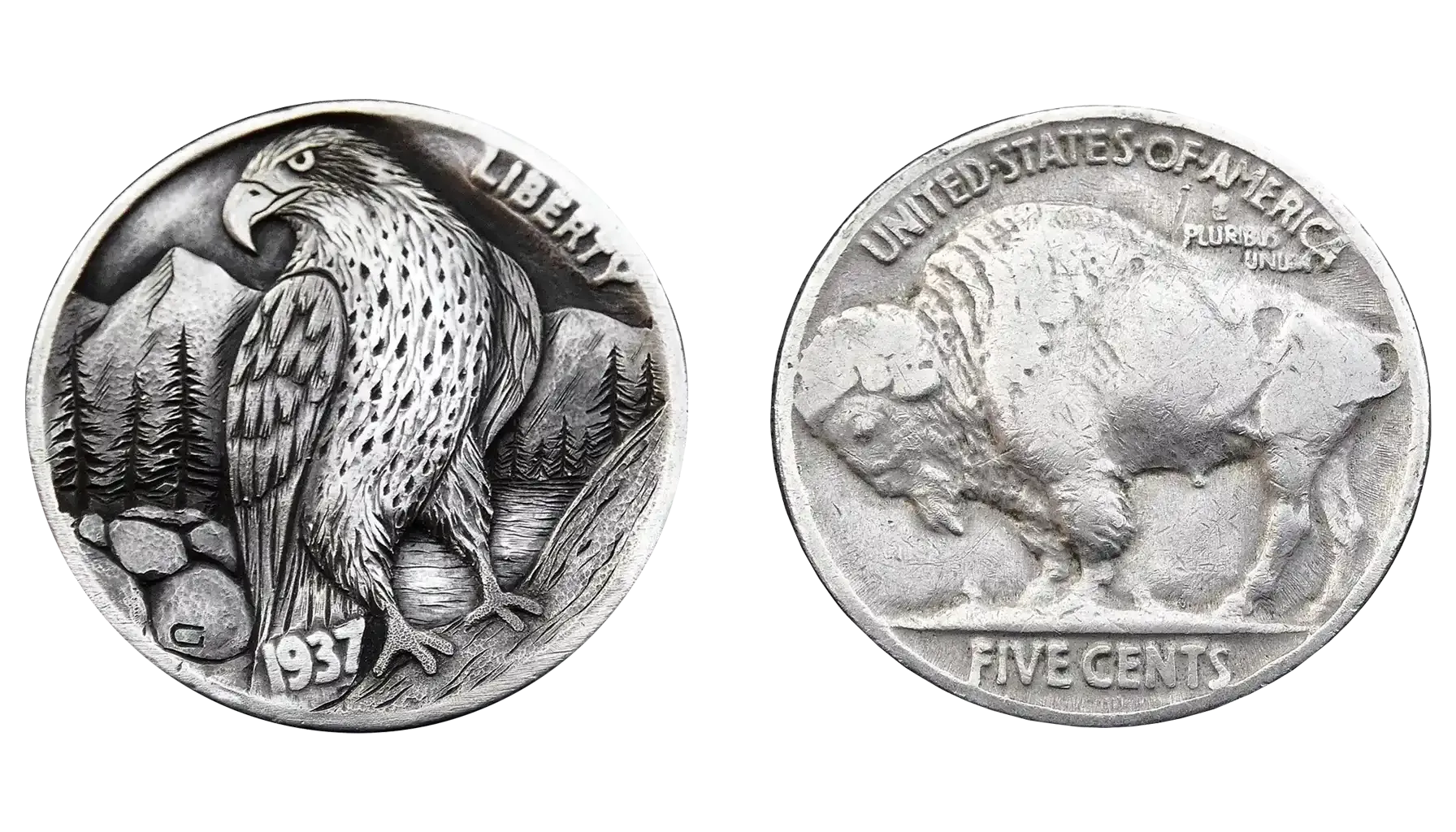Contents:
Within the Washington series, there are numerous prominent issues that cannot help but captivate collectors year by year. However, what if we told you that even the least obvious instances might also be as remarkable and valuable as the top-tier finds? This is where the 1973 quarter should be taken to the center stage.
The 1973 Washington quarter is a peculiar numismatic creation that carries a few curious secrets, i.e., its worth, errors, and investment potential hidden deep inside. For the convenience of our readers, we have compiled a concise yet comprehensive material that explores the main features that identify this coin as rare and defines current market trends that influence its value today.
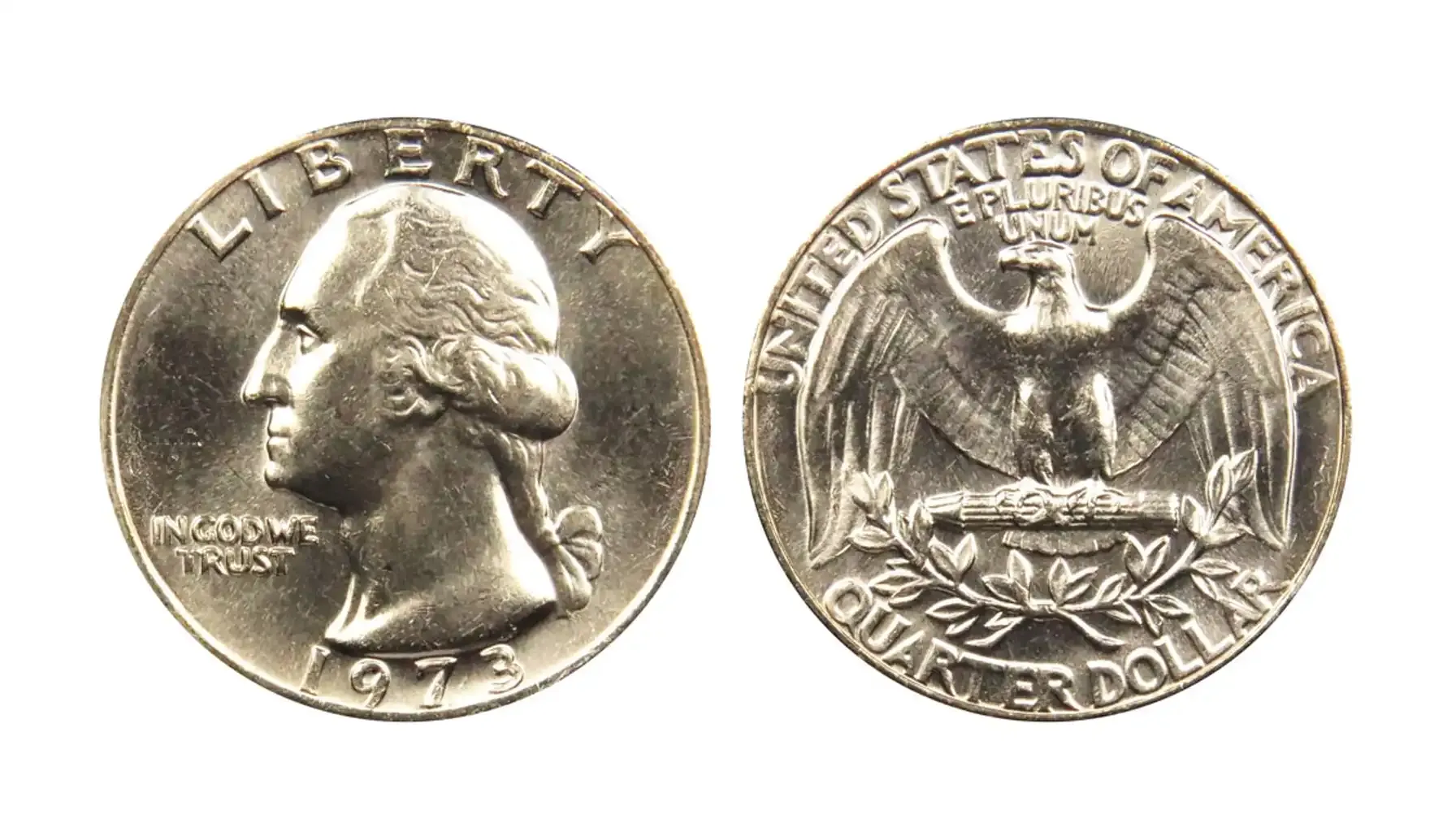
The History Behind the 1973 Washington Quarter
Sometimes, coins are made to be spent, not saved, but collectors may have other plans.
The 1973 Washington quarter is a 25-cent coin from the long-running Washington series, which began with the 1932 quarter and continued in its original form for 66 years, with modified iterations still being minted today. As such, the motive of the series introduction was quite immense: the coin was meant to commemorate the 200th anniversary of George Washington’s birth and, hence, replace the already trite Standing Liberty design with a new, innovative (if we could say so) appearance.
By 1973, the coin had been in circulation for over four decades, but subtle shifts in minting practices and economic context gave that year’s quarters unique characteristics. These coins were struck during a time of transition: in 1965, the US Mint had completely removed silver from circulating coins, and all further iterations were made of a copper-nickel-clad alloy. In terms of their intrinsic value, coins of copper would definitely be far less valuable, yet their collector value did not change.

Design Features and Physical Characteristics
Obverse: The obverse features a left-facing portrait of George Washington, designed by John Flanagan, with the inscription “LIBERTY” above Washington's head, the phrase “IN GOD WE TRUST” to the left of the bust, the date “1973” at the bottom, and the mint mark to the right.
Reverse: The reverse displays a heraldic eagle with its wings spread wide, perched on a bundle of arrows, with two olive branches beneath. As for the inscriptions, one may see “UNITED STATES OF AMERICA,” followed by “E PLURIBUS UNUM”, at the top, with the denomination “QUARTER DOLLAR” positioned along the bottom.
The Main Features of the 1973 Quarter | |
Composition | Outer layers of 75% copper, 25% nickel Core of pure copper (copper-nickel clad) |
Weight | 5.67 grams |
Diameter | 24.30 mm |
Thickness | 1.75 mm |
Edge | Reeded (119 reeds) |
Designer | John Flanagan |
Mint Marks | No mark for Philadelphia “D” for Denver “S” for San Francisco (proof only) |
Metal Value | Less than face value (due to clad composition) |
Varieties by Mint Marks
1973 25C (Regular Strike)
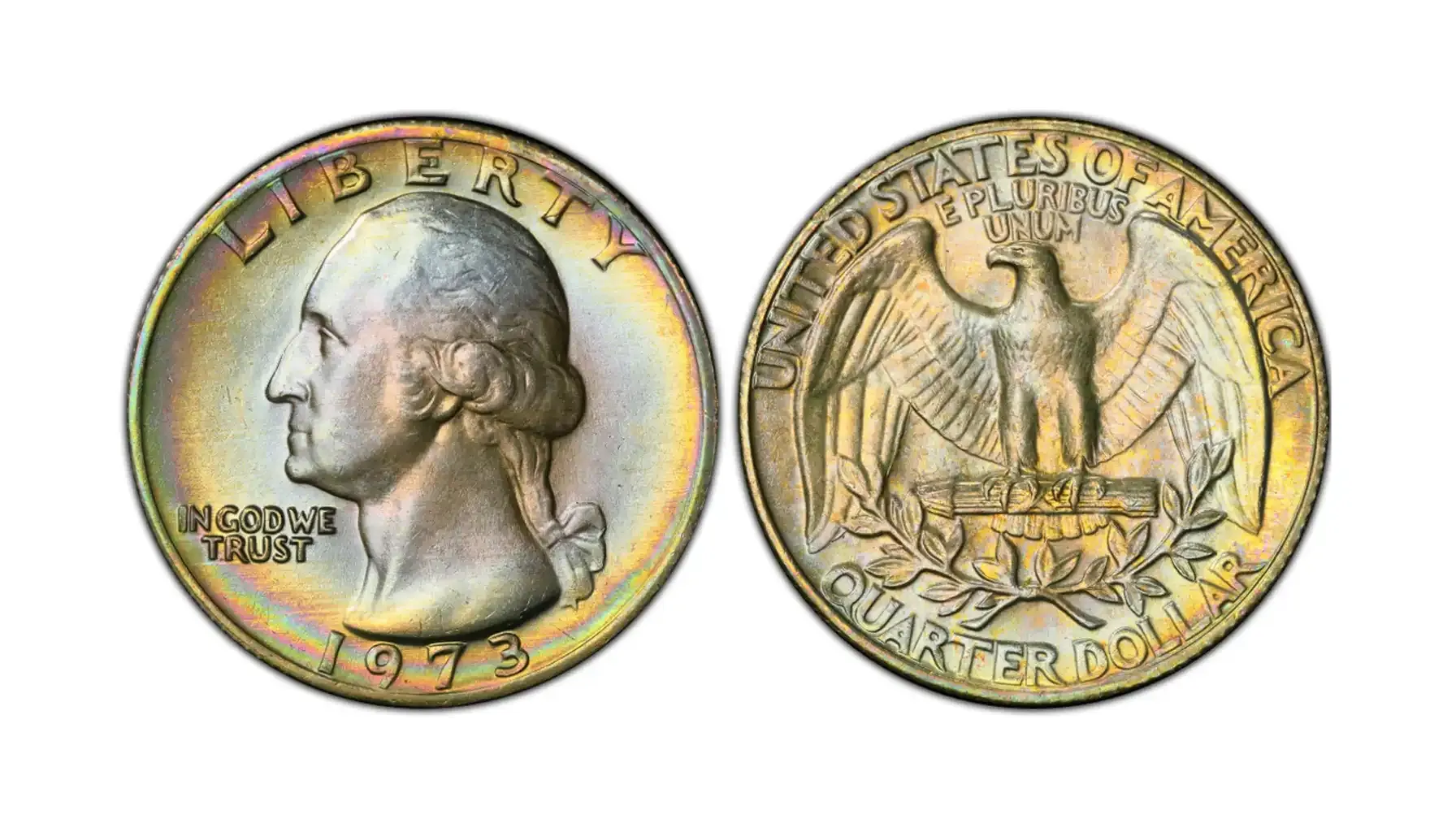
Produced by: Philadelphia Mint
Mintage: 346,924,000
Auction Record: $1,486 for MS67
The Philadelphia 1973 quarter no mint mark is the main power of the series: it is widely available across all grades and frequently found in everyday change, rolls, or mint sets. While it is indeed common, pristine specimens are obviously rare, with no examples surpassing MS67 confirmed to date.
1973-D 25C (Regular Strike)
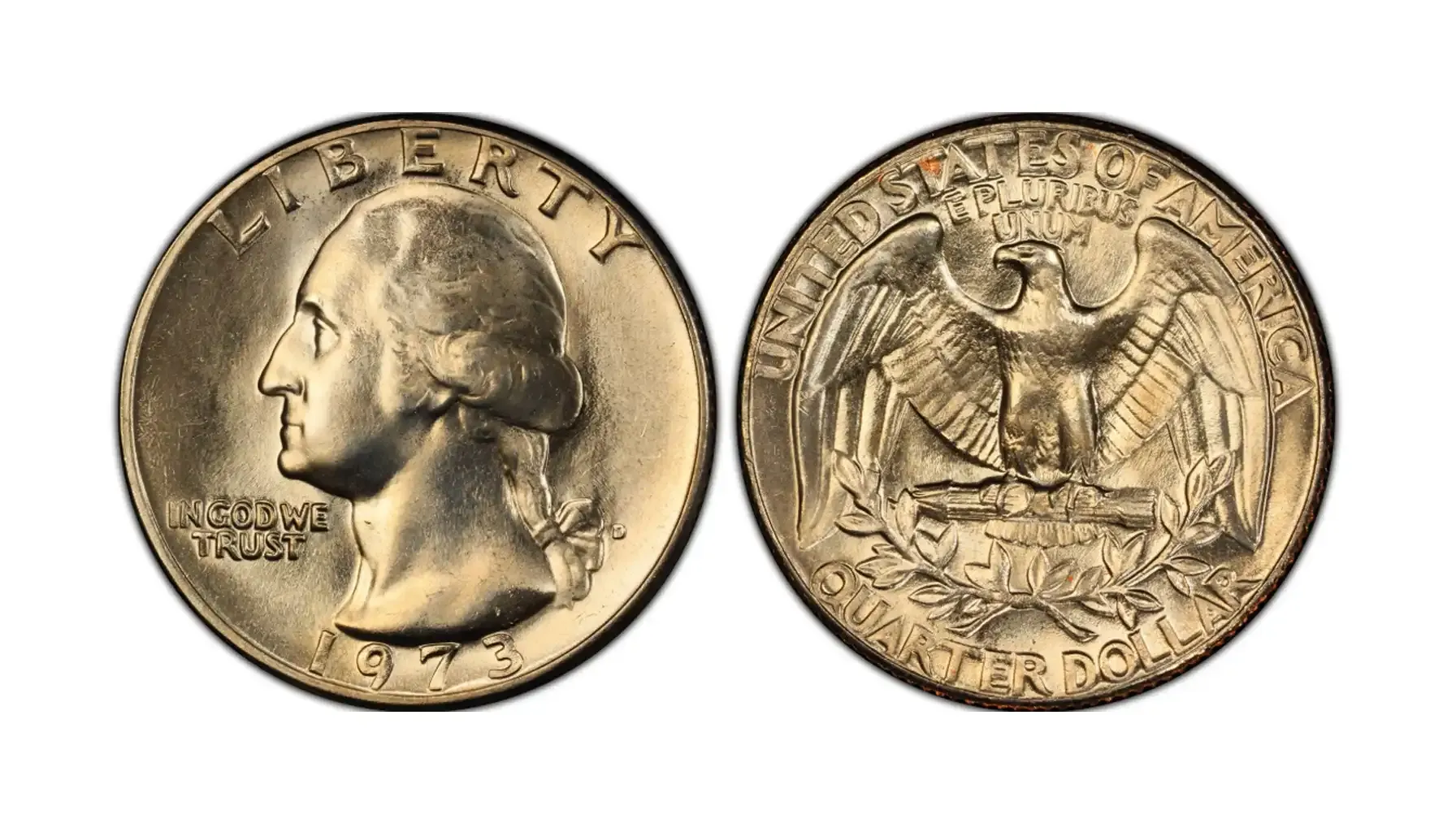
Produced by: Denver Mint
Mintage: 232,977,400
Auction Record: $2,750 for MS68
The Denver Mint can be positioned somewhere in the middle, since 1973 D quarter issues are more elusive than the ones produced at Philadelphia, but are still easily found in circulation. Its top-grade specimens, particularly MS68, attract notable collector interest and may be sold for a few thousand, if fortunate.
1973-S 25C, DCAM (Proof)
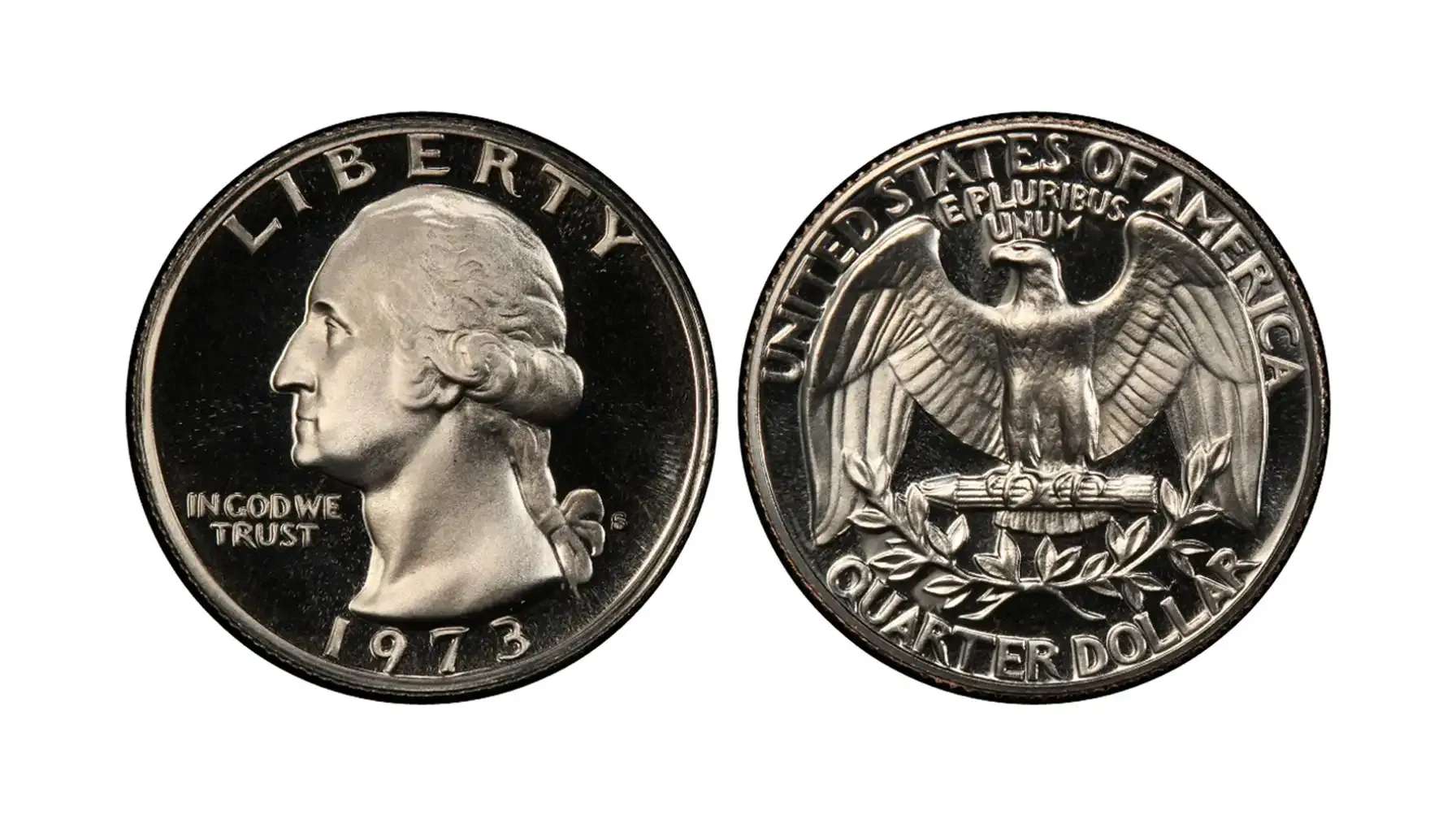
Produced by: San Francisco Mint
Mintage: 2,760,339
Auction Record: $5,875 for PR70DC
The San Francisco proof quarter is the center of the 1973 group, struck in limited quantities with exceptionally crafted details, aimed at collectors and coin appreciators only. These are mainly available in Proof (PR), Cameo (CAM), and Deep Cameo (DCAM) versions, with the DCAM coins bearing the highest 1973 quarter worth. Their peculiarity consists in deeply mirrored backgrounds with frosted design elements of exquisite nature and artistic merit.
Rare 1973 Quarter Errors That Matter
The 1973 quarter error list is so extensive that one may not be sure that each deviation has already been discovered. Because of this fact, we are to present the most notable 1973 quarter errors currently present on the market.
Doubled Die (DD) Error
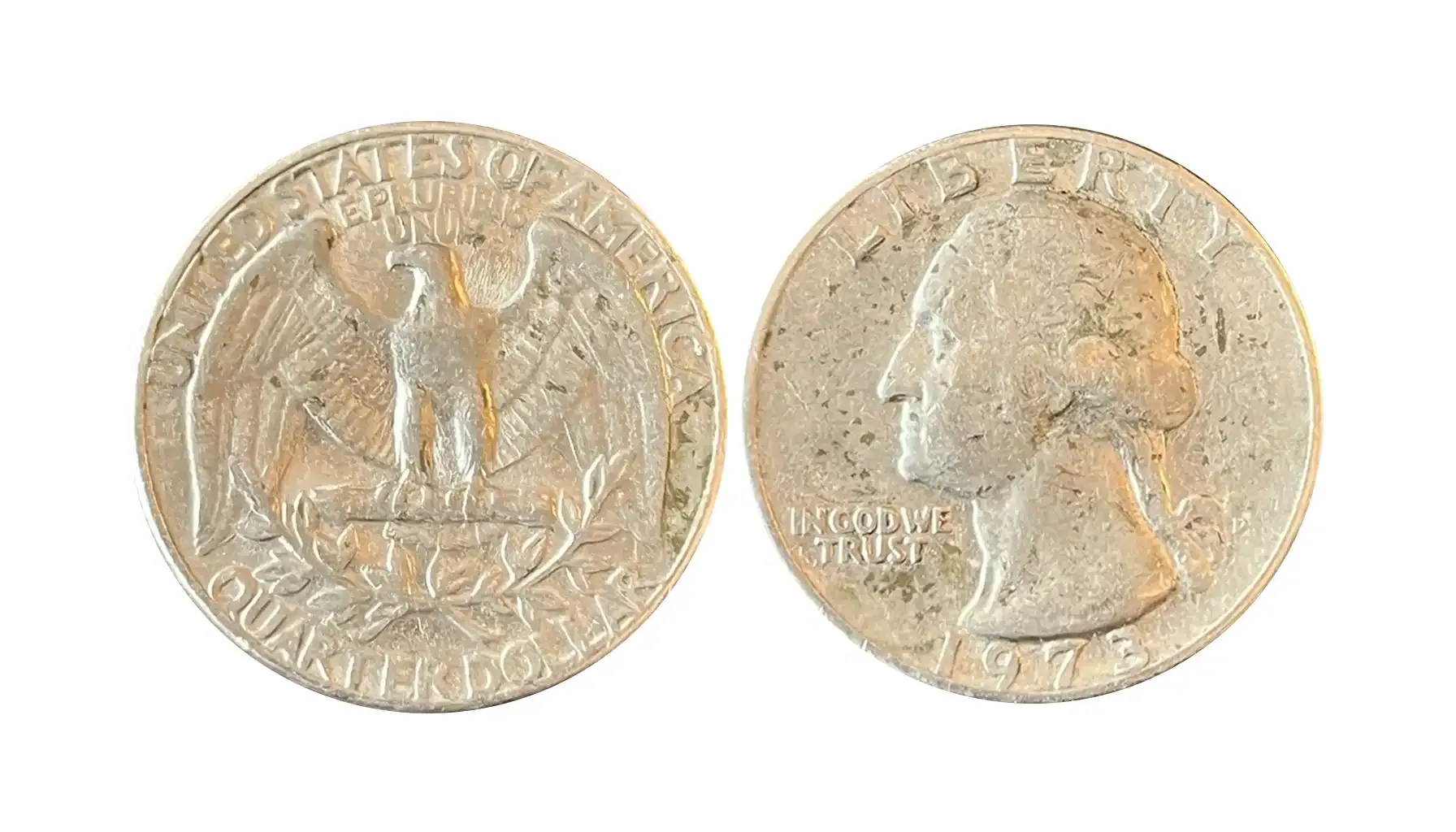
Estimated Value: $1,500
One of the most widespread errors is a doubled die, which occurs when the die used to strike the coin has a slight misalignment in its engraved image. The result is obvious – a noticeable doubling of letters or design elements, particularly visible on “LIBERTY,” “IN GOD WE TRUST”, or the date.
Off-Center Reverse
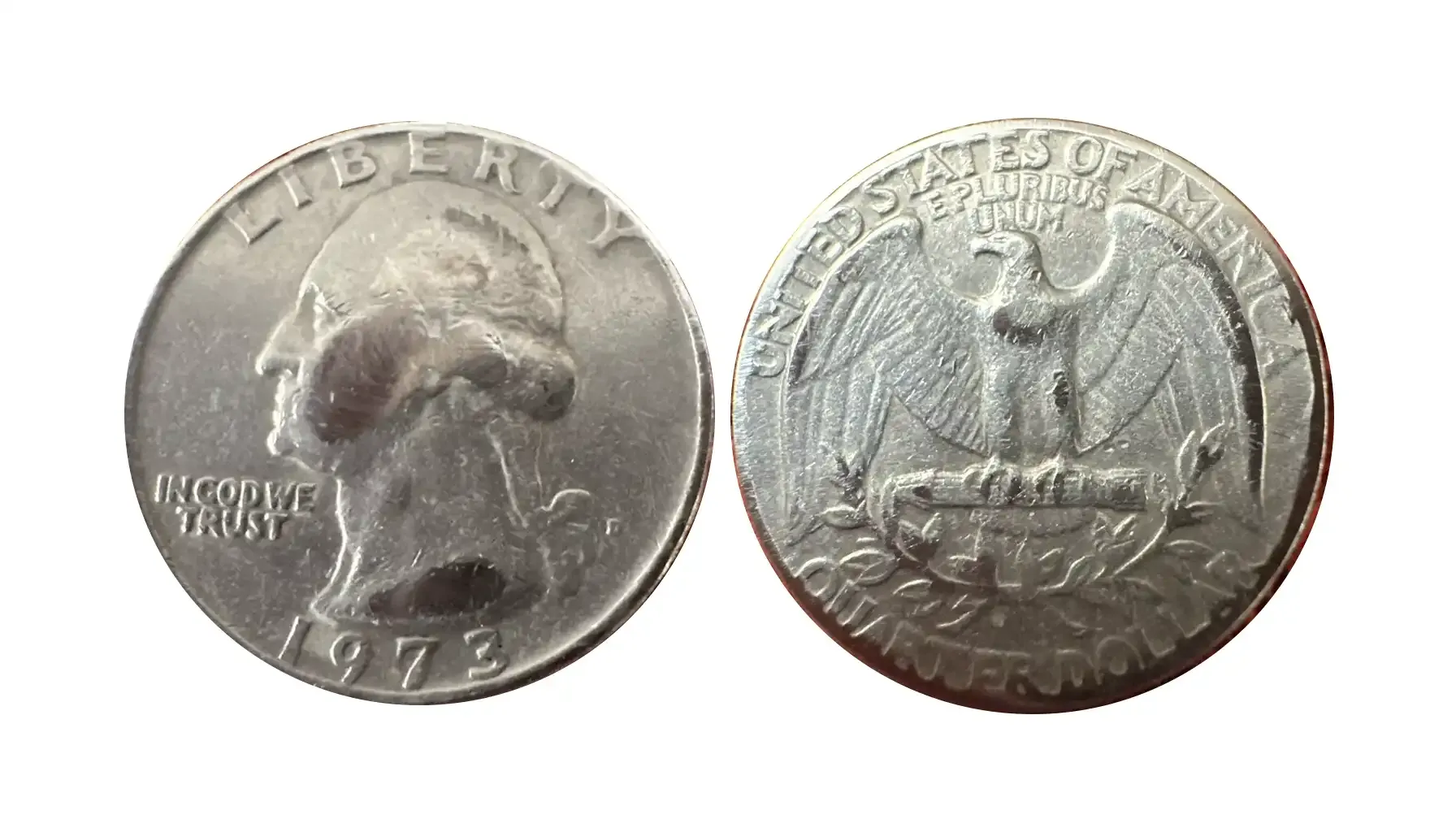
Estimated Value: $1,000
When the planchet is misaligned during the strike, the part of the design may get missing or shifted off the edge. For 1973 quarters, off-center strikes of 10–20% are mostly desirable.
Strike-Through Error
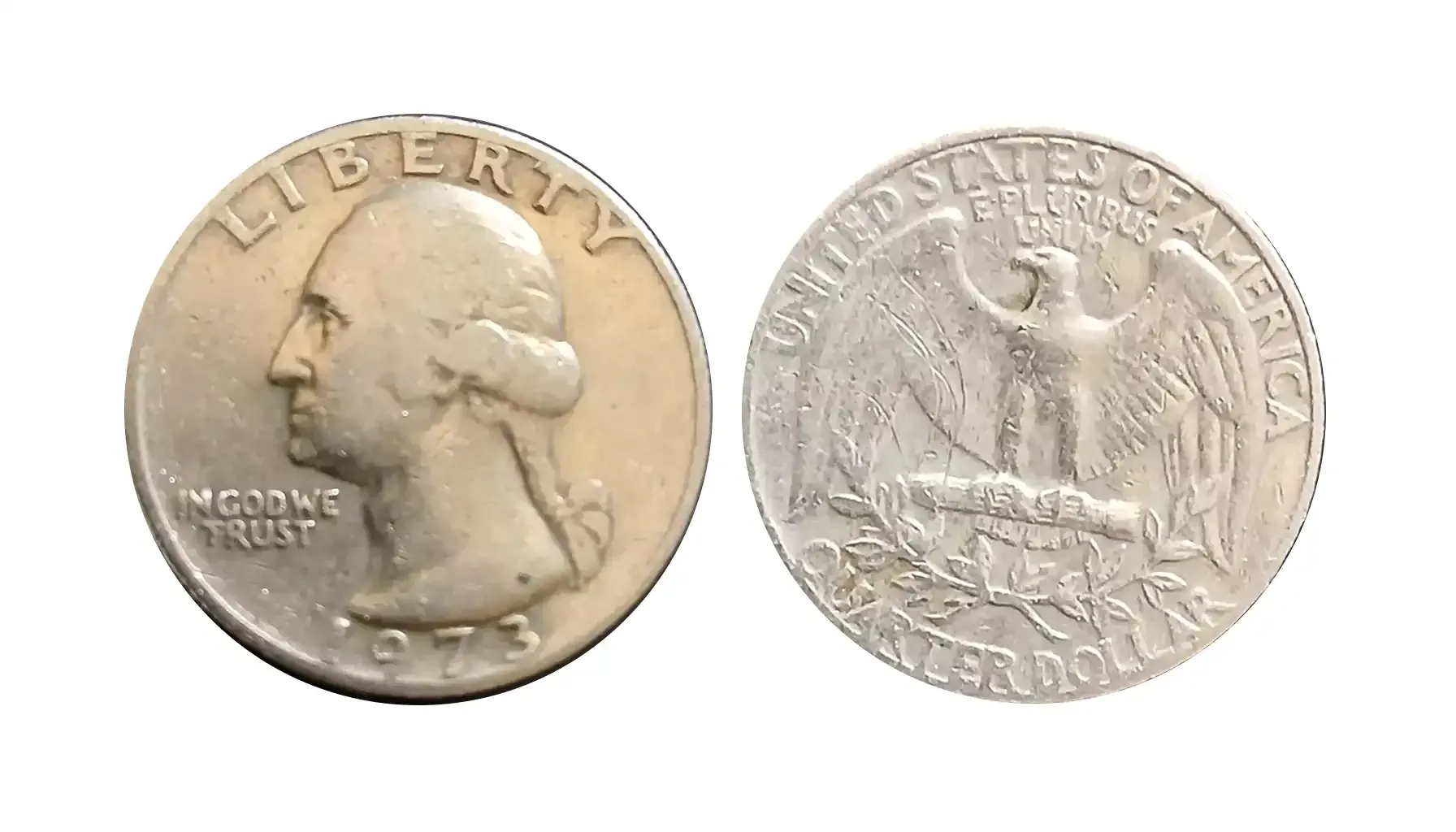
Estimated Value: $700
A strike-through error is a peculiar flaw that happens when a foreign object, e.g., grease or thread, comes between the die and the planchet during the strike. The object leaves a ghostly or indented impression, sometimes warping the coin’s features for good.
Letters on a Rim

Estimated Value: $630
Sometimes, inscriptions may be slightly mispositioned, and a part of the lettering appears on the edge rather than the face. It usually occurs thanks to a misfeed or die misalignment, which is a quite rare occasion so far.
Filled D

Estimated Value: $490
This kind of deviation may actually be related to any coin that bears a mint mark on its face. In this case, the letter “D” is usually obscured by grease or debris during striking, causing it to appear blurry, sunken, or entirely missing. One may say that it is genuinely subtle, but this is what makes it unique.
Quarter Struck on a Nickel Planchet

Estimated Value: $275
Occasionally, a quarter might be mistakenly struck on a smaller nickel-sized planchet (or any other planchet not intended for use). These errors are easy to spot due to their reduced diameter, weight, and incomplete design, e.g., the uneven rim or missing design elements.
Related article: The List of Quarter Errors by Year: Instances & Descriptions
The 1973 Quarter Value Today
Here is the question: How much is a 1973 quarter worth today? Is the 1973 quarter worth $35,000? As a rule, this mainly depends on the condition (grade), mint mark, and any unique features attributed. While circulated coins are usually sold for their face value only, uncirculated and proof pieces can be far more expensive than that. Besides, keep in mind that prices can fluctuate based on collector demand and auction trends.
The table below demonstrates the estimated value ranges for each major 1973 25-cent coin variety by grade.
Coin Type | Circulated (G–XF) | About Uncirculated (AU50–AU58) | Mint State (MS60–MS64) | Gem State (MS65–MS67) | Top Grade (Record) |
1973 | $0.25–$1 | $1–$2 | $2–$10 | $15–$150 | $1,486 |
1973-D | $0.25–$1 | $1–$3 | $2–$15 | $20–$250 | $2,750 |
1973-S | N/A | N/A | $3–$10 (PR) | $12–$75 | $5,875 |
How to Grade Your Quarter 1973 Condition on the Spot
So as to understand the true price of your collection, it is vital to know how to grade it in an instant. In fact, it is not as tiring and complicated as expected, though. All you need are a few smart tools and tricks to do it quickly and effectively:
Check for High Points: Look at Washington’s hair and the eagle’s feathers. These areas wear down first. The more pristine they are, the higher the grade should be.
Inspect the Luster: Mint State coins have a natural, radiant shine. Dull surfaces often signal circulation.
Use a Magnifier: A 5x to 10x loupe may help one spot minor wear or erroneous features.
Compare to Grading Guides: Take a look at reference images provided by reputable grading services like NGC or PCGS to help you gauge your coin’s level.
Use Coin ID Scanner: Snap a photo and let this innovative application estimate the grade and value instantly. It is the fastest and most accurate way to assess a condition when on the go.
Take a close look at the coins you own. You never know what surprises they might hold.

